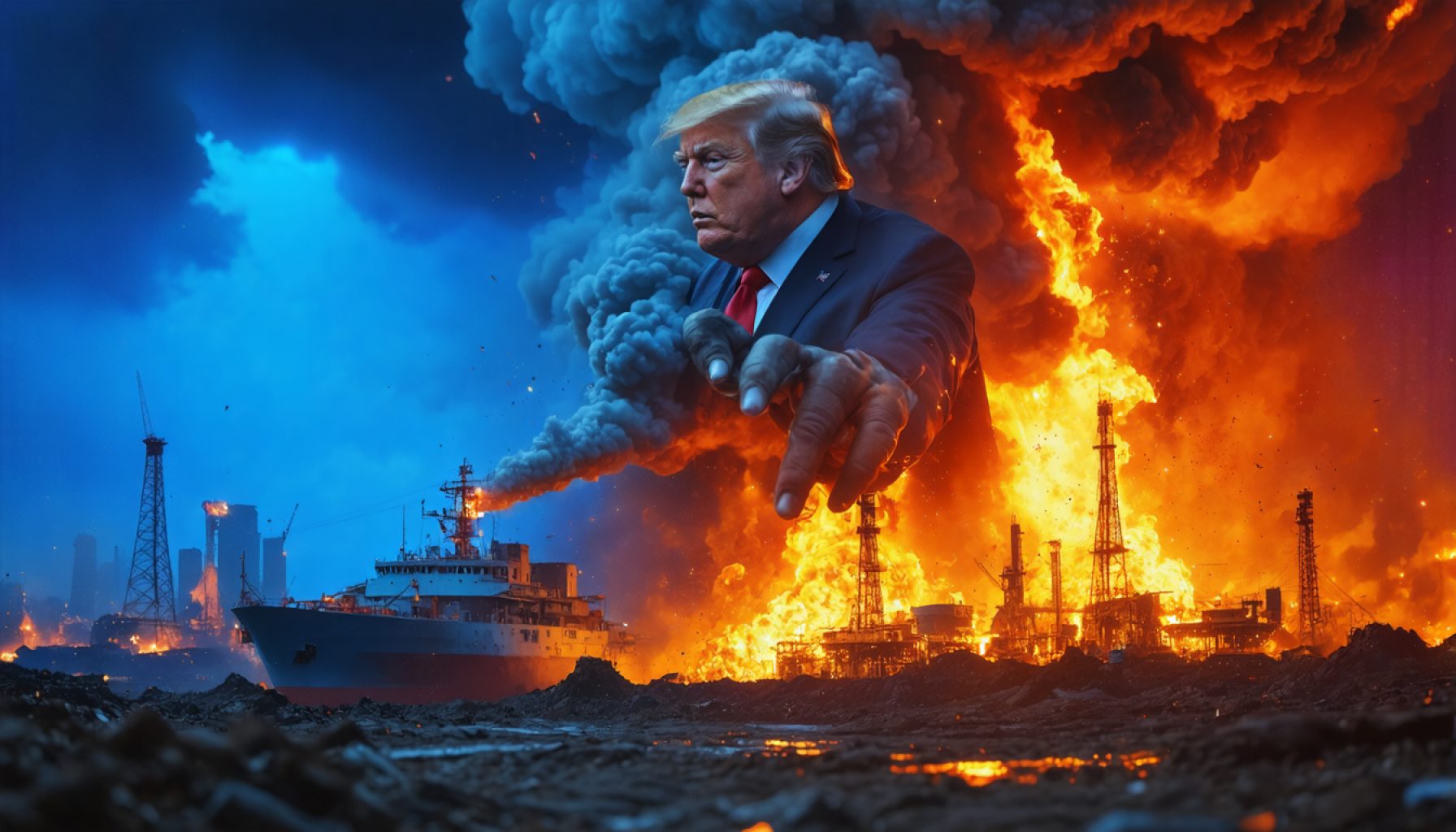
- President Trump’s tariff announcement signifies a major shift towards deglobalization, potentially redefining international trade dynamics.
- The move is perceived as a signal towards a world divided into distinct economic spheres, with the U.S. and China emerging as leaders of opposing blocs.
- There is speculation about the U.S. pivoting away from European allies, emphasizing an “America First” approach on global trade strategy.
- The rise of a tri-polar world economy suggests increased tariff tensions, leading to higher costs and reduced consumer choice.
- While the shift may offer control and security, it risks isolating economies and stalling innovation by detracting from the benefits of globalization.
A seismic shift has rattled the corridors of international trade, leaving markets in a tumultuous state of uncertainty. With President Trump’s audacious tariff announcement, a bold chess move on the global economic board, analysts are grappling with the potential long-term repercussions that could redefine international commerce.
As investors scrambled to adjust their portfolios, the air buzzed with speculation and a hint of trepidation. The proclamation is seen not merely as a play in tariff negotiations but as a decisive signal of deglobalization—a peeling back of the intricate web of global interdependence that has been spun over decades. Liberation Day, as term-coining economists at Wells Fargo describe it, seems to herald a paradigm shift toward a world divided into distinct economic spheres.
This vision of fragmentation conjures the image of the world splitting into separate camps, with the U.S. and China at the helm of opposing blocs. Historically intertwined through economic collaboration, these superpowers now appear poised on either side of a widening chasm. The implications of this divide are profound, suggesting an era where alliances are shaped not by mutual benefit but by defensive strategies and tariff walls.
Add to this the United States’ hinted pivot away from its European allies, and the landscape of international trade begins to resemble a delicate triptych, each panel representing a unique economic sphere. Here, the rhetoric of “America First” reverberates with newfound clarity, hinting at a retreat from global partnerships to focus inwardly.
The stark reality of this potential tri-polar world is one of complexity and cost. The cross-tariff dynamics among competing blocs promise not just economic but geopolitical consequences. Businesses may find themselves floundering in a sea of shifting policies, with consumers bearing the brunt of increased prices and limited choices.
Yet, amidst the turbulence lies a critical takeaway: While fragmentation may promise a semblance of control and security, it also risks isolating economies, stalling innovation, and undermining the collaborative potential that globalization once held. As nations navigate this evolving tableau, the challenge will be to balance national interests with the inescapable reality of a world that is, in many ways, irrevocably connected.
Unraveling Global Trade: The Impact of Tariffs and the Rise of Economic Blocs
The Tariff Turmoil: Navigating the New Global Trade Landscape
The recent announcement of tariffs by President Trump represents a significant juncture in global trade, hinting at a wider movement towards deglobalization. This decision has prompted a seismic shift, inducing uncertainty in markets worldwide. The implications go beyond traditional tariff negotiations, suggesting a strategic maneuver towards reshaping international commerce.
Key Implications of Tariff Announcements
1. Potential Fragmentation: The concept of “Liberation Day” implies a world moving towards distinct economic blocs. With the U.S. and China at the core of opposing alliances, the global landscape could see a reorganization reminiscent of Cold War-era economic spheres.
2. Economic Realignment: This potential realignment could impact the U.S. relationship with European allies, as America may prioritize inward-looking economic policies. This “America First” approach could lead to a shift in traditional trade partnerships.
3. Market Reactions: Investors are recalibrating their portfolios in response to this potential shift in trade dynamics. The uncertainty could affect stock markets and global supply chains.
Long-Term Repercussions of Economic Separation
– Innovation Risks: While fragmentation could offer control, it also poses risks to innovation. A divided world may hamper collaborative efforts crucial for technological and scientific advancements.
– Consumer Impact: Increased tariffs may lead to higher prices for consumers, reducing their purchasing power and limiting product variety.
– Geopolitical Consequences: The emergence of multiple economic blocs could have significant geopolitical implications, influencing global governance, security, and diplomatic relations.
How-To Navigate the Evolving Trade Environment
1. Diversify Investments: Consider spreading investments across different sectors and geographies to mitigate risks associated with geopolitical instability.
2. Monitor Policy Changes: Stay informed about international trade policies and tariff changes that could impact business operations and supply chains.
3. Adapt Business Strategies: Companies should be flexible, potentially exploring new markets or adjusting supply chains to remain competitive in a shifting trade landscape.
Market Forecasts & Trends
– Short-Term Volatility: Expect fluctuating markets as stakeholders evaluate the long-term effects of tariff implementations and potential retaliatory measures.
– Long-Term Restructuring: Industries heavily reliant on international trade may undergo significant restructuring to align with new economic realities.
Pros and Cons of Economic Blocs
Pros:
– Enhanced domestic control over economic policies.
– Potential for stronger national industries.
Cons:
– Risk of isolation and reduced global influence.
– Potential for economic inefficiencies and higher costs.
Conclusion and Actionable Tips
The evolving trade dynamics present both challenges and opportunities. Here are some quick tips:
– Stay Informed: Regularly update your knowledge on global trade policies.
– Be Flexible: Cultivate adaptability in business strategies to navigate changes.
– Invest Wisely: Consider the geopolitical landscape when making investment decisions.
For more information on the global trade landscape, visit Financial Times.



